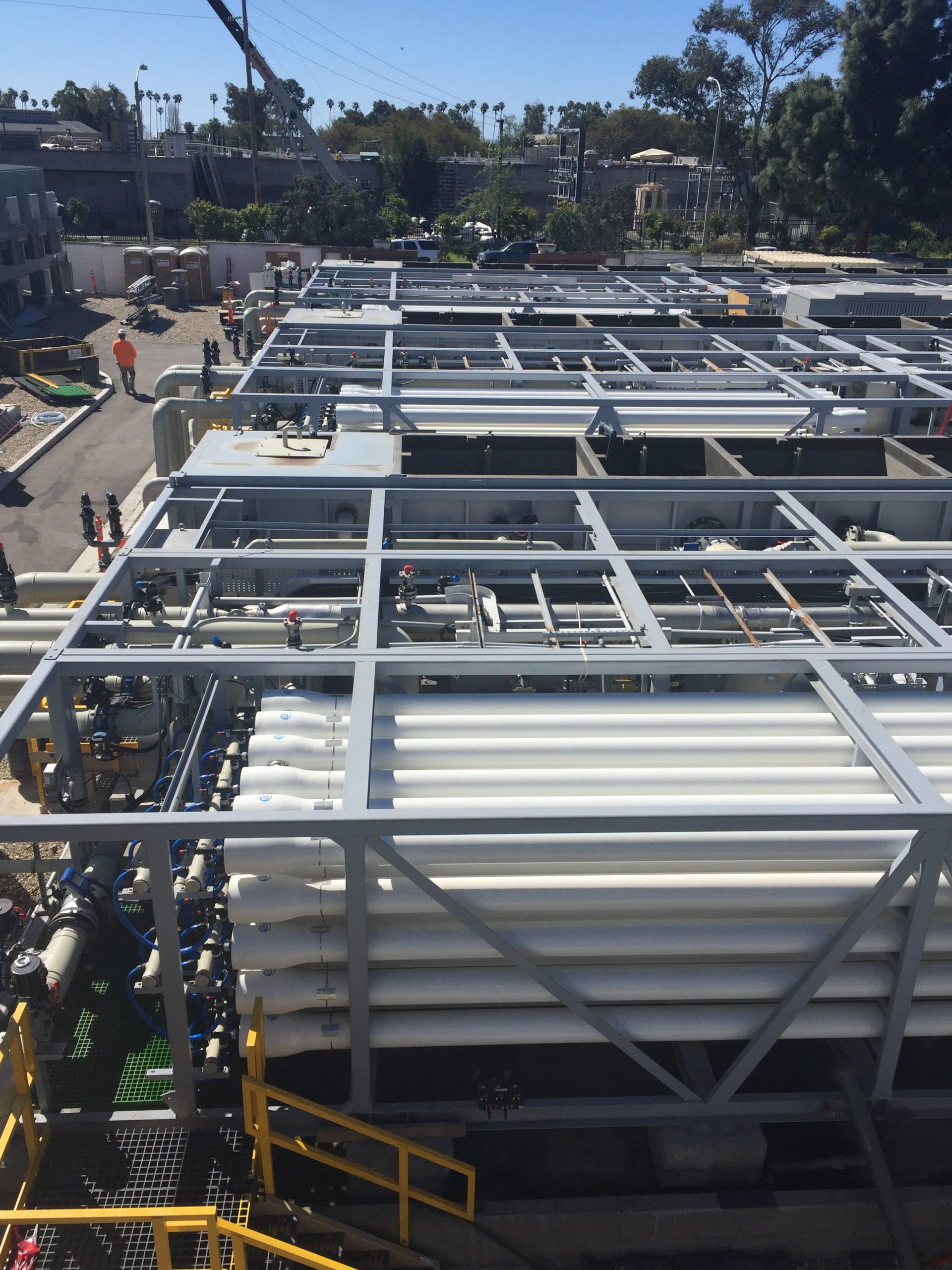Charles E. Meyer Desalination Plant Project
Santa Barbara, California
The decision to make desalination a permanent part of the city of Santa Barbara’s water supply portfolio resulted in the Charles E. Meyer Desalination Plant Project, a reactivation of a 3-million-gallons-per-day facility built by the city in 1992.
Kiewit was the major design-build subcontractor and balance-of-plant engineer responsible for civil, structural, mechanical and electrical design. Kiewit managed all construction and self-performed much of the work.
Scope included demolition of the existing facility and installing new concrete foundations, modular reverse osmosis (RO) technology, underground piping and duct banks, carbon dioxide tank, ultraviolet disinfection system, RO surge tank, post-treatment, backwash collection pump and refurbished product water tanks, along with all associated piping, instrumentation and electrical equipment.
Kiewit also remodeled the existing administration and electrical buildings and performed offsite work including constructing a remote booster pump station, rerouting existing piping and setting new inlet structures and pumps approximately 2,500 feet offshore and 50 feet under water.
In delivering the project, the Kiewit team helped the project stay on the tight time schedule, driven by unprecedented drought, by overcoming permitting challenges with expedited design packages. The team also minimized the impact of the electrical tie-in, involving a shutdown, at the adjacent El Estero Wastewater Treatment Facility through careful planning and stakeholder engagement.
In addition, the Kiewit team developed and executed a remediation plan to remove contaminated soils at the plant site; rehabilitated a deteriorating section of fiberglass-reinforced plastic piping at the ocean intake; and replaced corroded water distribution piping.
About half of the incoming seawater to the 1.45-acre desalination plant ends up as drinking water supply. After treatment, natural minerals are reintroduced to the water, before it’s pumped into the distribution system, to make the water compatible with the city’s other supplies. The remaining brine (twice as salty as normal seawater) from the desalination process is blended with treated wastewater from the El Estero WWTF and discharged into the ocean about 1.5 miles offshore.
Featuring the most advanced technologies available at the time, the plant uses 40 percent less energy than the original design and minimizes environmental impacts while providing approximately 30 percent of the city’s drinking water.
